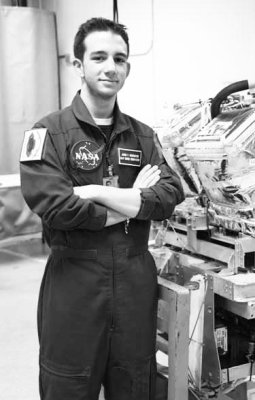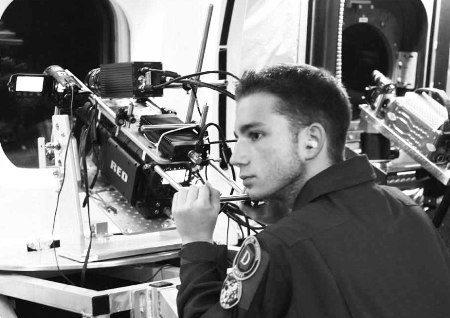From high school to NASA: Canton’s Yiannis Karavas gets the opportunity of a lifetime
By Jeffrey CattelOne morning this winter, Canton resident Yiannis Karavas arrived early to his Introduction to Astronomy class at the Dexter School in Brookline. Ron Dantowitz, the director of the Clay Center, the school’s observatory, stood at the front of class, acting as a substitute for Karavas’ teacher Kelly Beatty.
Before the rest of the class filtered in, Karavas struck up a conversation with Dantowitz about his interest in telescopes and optics. Dantowitz than revealed that both topics were areas he studied extensively and offered Karavas the opportunity for an independent study with the Clay Center.
A month into the independent study, Dantowitz asked Karavas to write an expository essay about Hayabusa, an unmanned Japanese aircraft that aimed to collect sample material from the near-Earth asteroid “25143 Itokawa.” After a few weeks of research, Dantowitz told Karavas he didn’t have to worry about the paper, but instead had to become familiar with every intricacy of the mission because he would be joining Dantowitz for NASA’s involvement with tracking the spacecraft’s re-entry.
“My initial reaction was, ‘Yes! I won’t have to write a paper,’” Karavas said. “It took me a day to really get used to the idea.”
Two months later Karavas flew with Dantowitz and two additional teachers and two students from Dexter and its sister school Southfield to California. In California, the group aided the preparation of NASA’s DC-8 flying observatory.
For a week and a half the group spent 18-hour days at the NASA hangar helping to install cameras and platforms, fix cables, and test the aircraft’s numerous systems.
“The craft only re-enters the Earth’s atmosphere once, so we needed to make sure everything was perfect,” Karavas said.
NASA planned to use the DC-8 flying observatory in conjunction with ground observations to record how the Japanese spacecraft broke up when it re-entered the Earth’s atmosphere, using the data to better engineer its own spacecrafts for reentries.
After the time spent in California, Karavas flew with his teachers and peers to Australia where NASA’s observational mission would take place in the Woomera Desert.
The night of the Hayabusa’s reentry Karavas was stationed as part of the ground observation team along with Beatty, his astronomy teacher.
“Unfortunately, I was tracking it with the cameras, so I had to keep my eyes on the computer screen,” Karavas said. “I had a quick chance to glance up and see it. It was so exciting.”
No amount of research could completely prepare anyone to witness such a reentry, which Karavas described as shorter and brighter than he expected. “You could definitely open a book and start reading it because it was so bright,” he said.
Karavas realizes that his fast track from astronomy student to an application-based astronomy operation like the NASA mission he experienced is unusual, especially for a high school student.
“I never expected to use my acquired knowledge from astronomy so quickly,” he said. “I knew there were applications for what I was learning in class, but it was amazing to be part of one such application.”
Karavas will spend his senior year working with Dantowitz at the Clay Center to help analyze the data obtained from the DC-8 flying observatory.
“I’ve heard it’s a long and tedious process, but I’m still excited to start,” he said.
Short URL: https://www.thecantoncitizen.com/?p=3207












